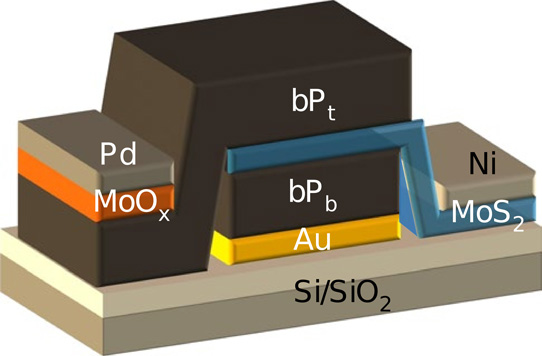The team from University of California, Berkeley and Lawrence Berkeley National Laboratory in the USA, National Tsing Hua University in Taiwan and University of Melbourne in Australia reported their studies on developing bP/MoS2 (black Phosphorus/Molybdenum disulfide) heterojunction photodiodes for mid-wave infrared (MWIR) detectors. The team claims that they have significantly improved the performance of bP photodiodes and their devices can be competitive with conventional MWIR (Mid-Wavelength Infrared from 3µm to 8µm) detectors. The new MWIR devices use black phosphorus (bp) as the absorbing material and molybdenum disulfide (MoS2) as electrodes (James Bullock et al. Nature Photonics, volume 12, pages 601–607 (2018)).
Black phosphorus (bP) and molybdenum disulfide (MoS2) are Van der Waals materials that are two-dimensional (2D) in nature showing strong in-plane and weaker between-plane bonds. The 2D materials can be used to create thin absorbing layers with reduced thermal noise from electron-hole generation-recombination. The Van der Waals forces between planes in these 2D materials eliminate the problem with dangling bonds at the surface. The conventional bulk semiconductor materials must be thicker to reduce the effect of surface recombination at the dangling bonds. By using 2D bP and MoS2 materials, the thickness of the device can be significantly reduced.

The new MWIR photodiodes can offer external quantum efficiencies at room temperature up to 35% and the specific detectivities as high as 1.1 x 1010 cm Hz1/2 W-1 in the MWIR region. The bP/MoS2 photodiodes are the first to use bias-selectable polarization-resolved photodetectors and they operate without the need for external optics. As a compact, sensitive and in expensive solution, the new photodiodes have the potential for astronomy, polarization-division multiplexing and remote sensing.




